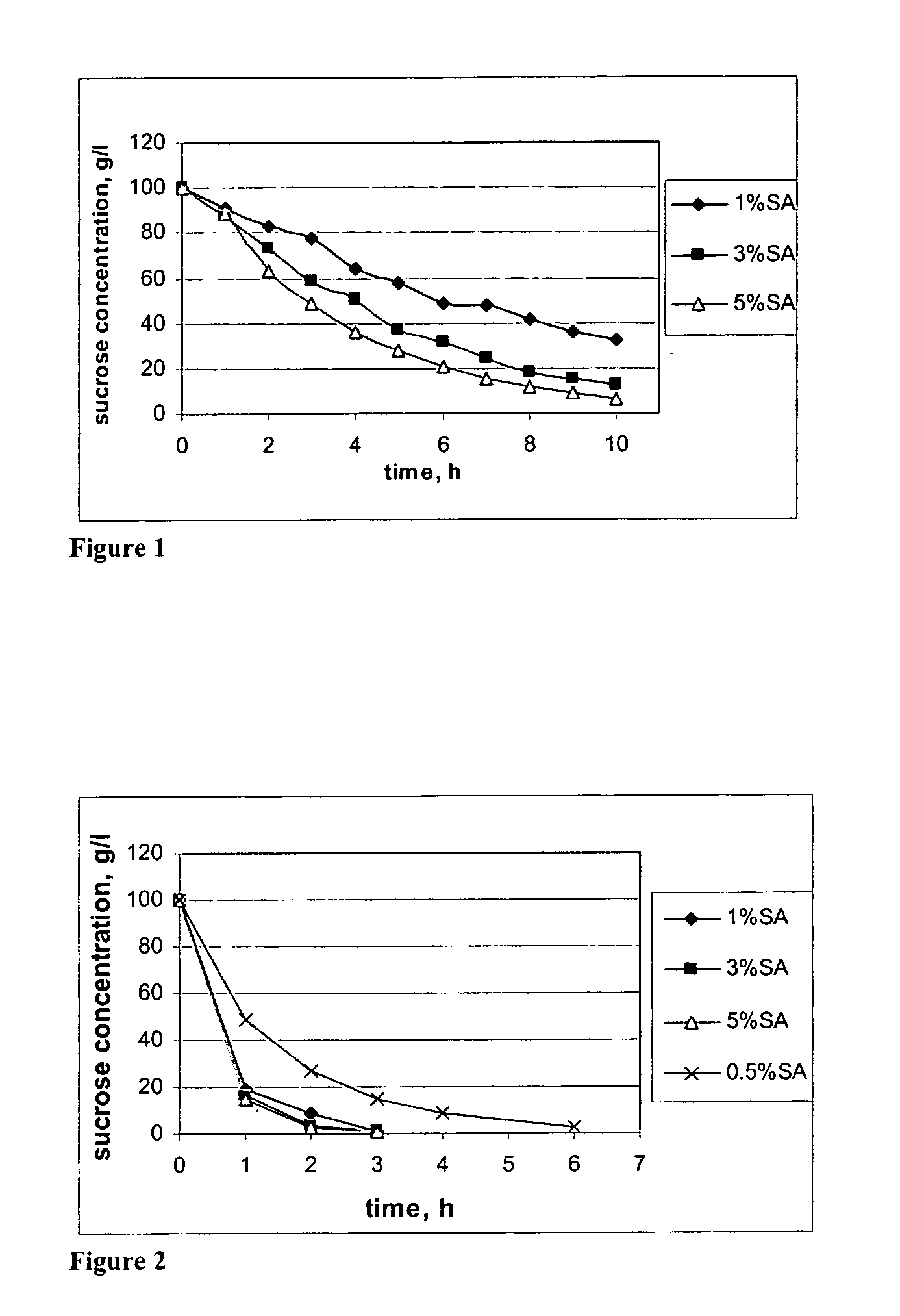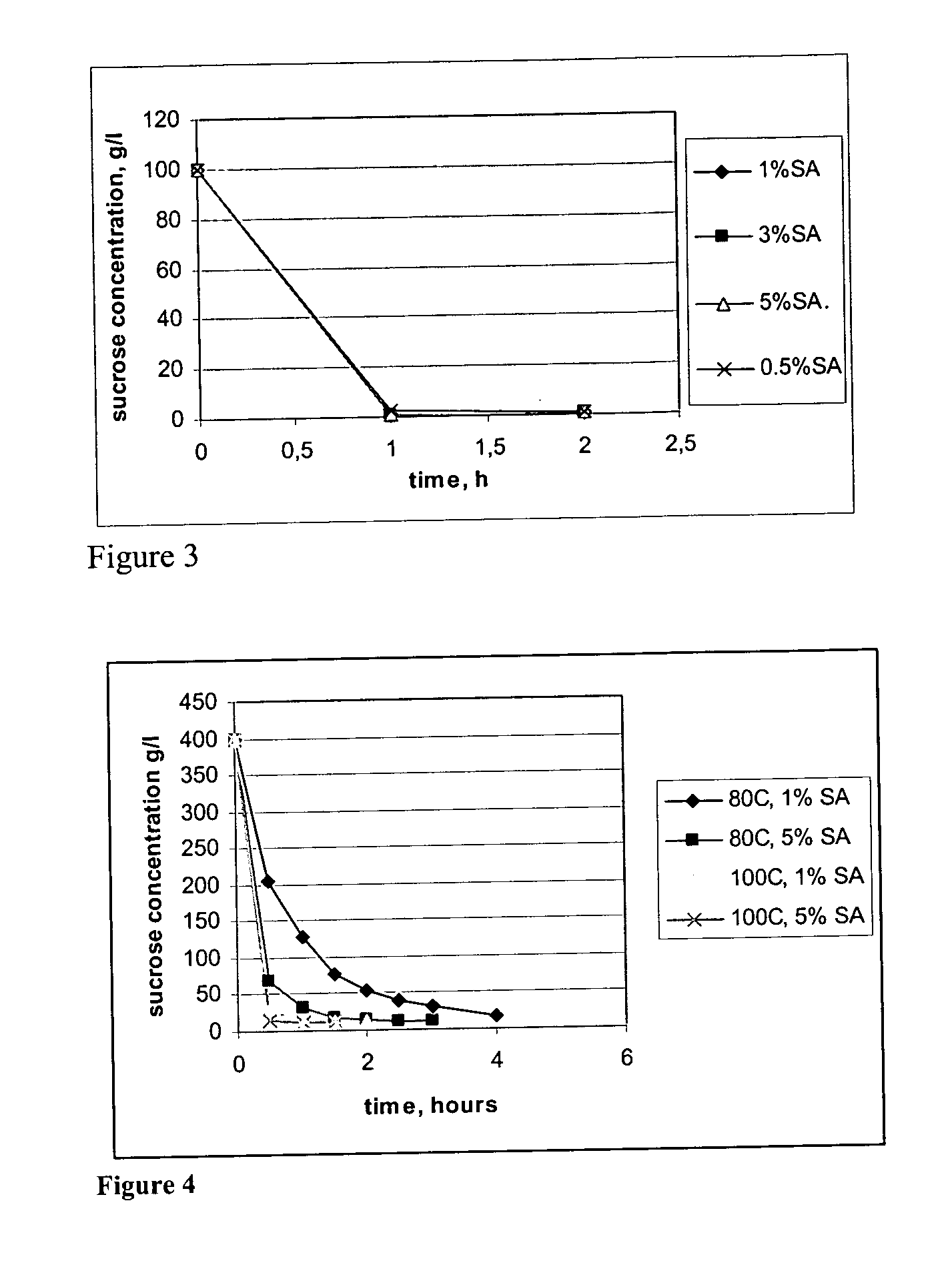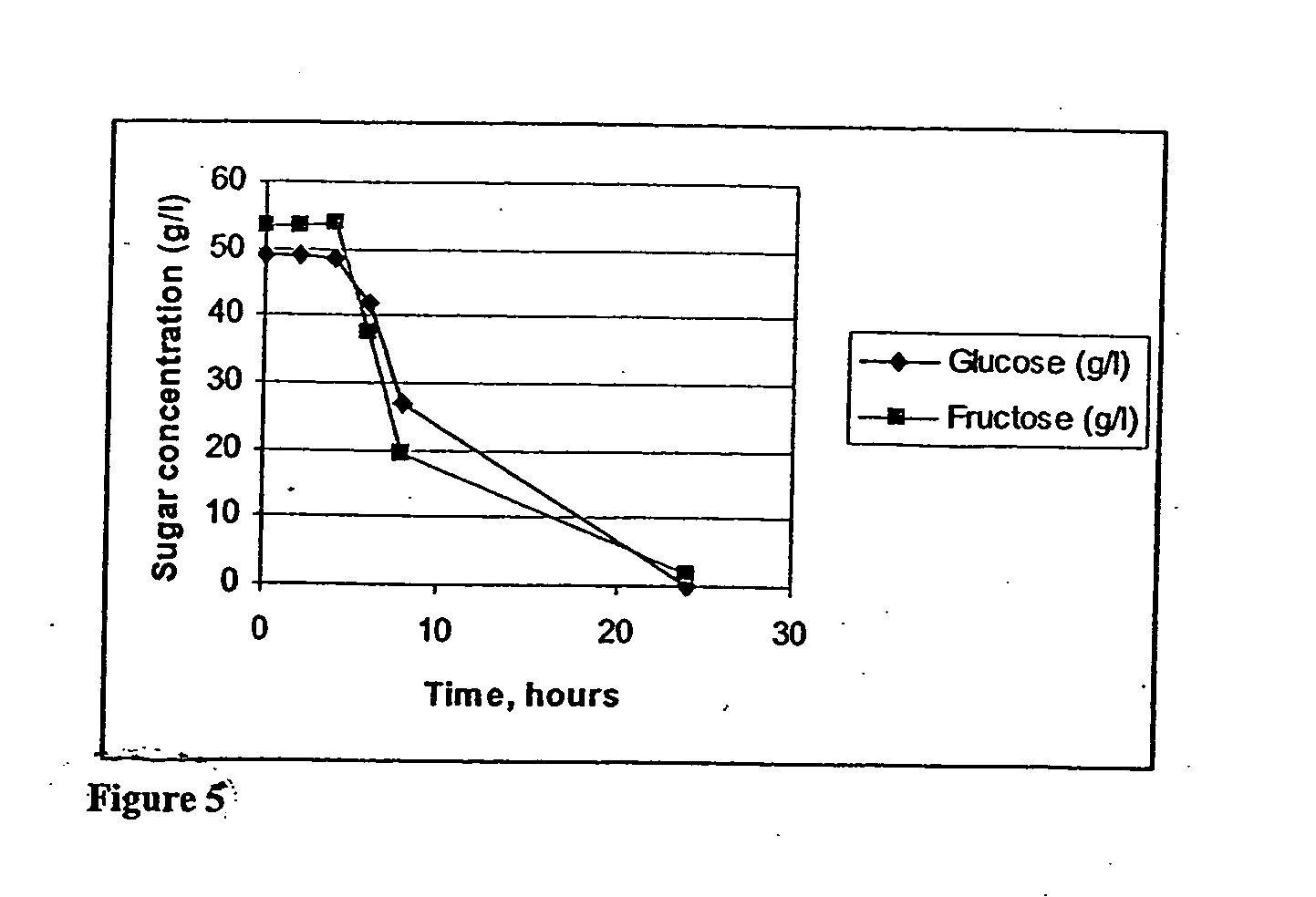Process for producing succinic acid from sucrose
a technology of sucrose and succinic acid, which is applied in the preparation of sugar derivatives, sugar derivates, sugar derivatives, etc., can solve the problems of separate and costly recovery processes, and achieve the effect of increasing the hydrolysis ra
- Summary
- Abstract
- Description
- Claims
- Application Information
AI Technical Summary
Benefits of technology
Problems solved by technology
Method used
Image
Examples
example i
Effect of Catalyst Concentration at Low Temperatures.
[0022] Sucrose and water are mixed in E-flasks in ratio liquid:solid 10:1. Temperature is kept constant at 60° C. in an oven equipped with a shake table. Succinic acid is added to the flasks to give concentrations of 1, 3, and 5% acid by weight. The data is shown in Tables 5 to 7. An increase in the catalyst loading increases the rate of hydrolysis significantly at low temperatures. Yields after ten (10) hours hydrolysis for glucose and fructose are summarized in Table 1. The yields are based on the amount of glucose or fructose formed divided by the amount of sucrose hydrolyzed. For glucose at higher acid concentrations some product degradation takes place. For fructose some degradation is evident at all acid concentrations.
TABLE 1Yield of fermentable sugars in weight-%.Yield (weight-%)FructoseGlucose1% SA88.499.33% SA86.5955% SA87.294.9
example 2
Effect of Catalyst Concentration at Elevated Temperatures
[0023] Sucrose and water were mixed in E-flasks in ratio liquid:solid 10:1. Temperature was kept constant by heating on a heating plate. Agitation was obtained from a magnetic stirrer. Temperatures investigated were 80° C. and 100° C. The catalyst loading (succinic acid added) corresponds to 0.5, 1, 3, and 5% by weight as in Example 1. Sucrose hydrolysis as a function of time for the different catalyst loadings at 80° C. and at 100° C. The data is shown in Tables 5 to 7. At higher temperatures the hydrolysis rate was greatly increased. At 80° C. acid concentrations above 1% resulted in almost complete hydrolysis after two hours. A concentration of 1% needed three hours to complete the hydrolysis and 0.5% was not finished until after six hours. At 100° C. the hydrolysis was completed in one hour for all acid concentrations. Hydrolysis products were formed in yields 95-100% based on the sucrose hydrolyzed with less degradation...
example 3
Hydrolysis of Liquid:Solid Ratios 10:4
[0024] To produce a media with high enough sugar concentration for fermentation purposes higher liquid:solid ratios (higher percentages of sucrose) must be used. Using the same experimental setup as in Example 2, but with liquid:solid ratio 10:4, acid concentrations of 1%, and 5% were investigated at 80° C. and 100° C. Sucrose hydrolysis results are presented in Table 14. Yields after finished hydrolysis are shown in Table 2. The yields are expressed on a weight basis as the mass of produced monosaccharides per mass of hydrolyzed sucrose. From the yields it can be seen that the best results are achieved by low acid loadings and high temperatures. After one hour the yields were close to 100%, and heating for another hour did not generate any significant sugar degradation.
TABLE 2Yield of fermentable sugars in weight-%.Yield (weight-%)GlucoseFructose 80° C., 1% SA81.886.2 80° C., 5% SA82.386.2100° C., 1% SA95.999.4100° C., 5% SA88.892.3
PUM
| Property | Measurement | Unit |
|---|---|---|
| temperature | aaaaa | aaaaa |
| temperature | aaaaa | aaaaa |
| weight ratio | aaaaa | aaaaa |
Abstract
Description
Claims
Application Information
 Login to View More
Login to View More - R&D
- Intellectual Property
- Life Sciences
- Materials
- Tech Scout
- Unparalleled Data Quality
- Higher Quality Content
- 60% Fewer Hallucinations
Browse by: Latest US Patents, China's latest patents, Technical Efficacy Thesaurus, Application Domain, Technology Topic, Popular Technical Reports.
© 2025 PatSnap. All rights reserved.Legal|Privacy policy|Modern Slavery Act Transparency Statement|Sitemap|About US| Contact US: help@patsnap.com



